Electrical stimulation which brings relief
Whether it’s a spinal cord injury, multiple sclerosis, stroke or Parkinson’s disease, there are different possibilities of electrical stimulation for neuronal disorders and impairments available today for example, for the adjustment and modification of symptoms by movement disorders and pain control.
My repertoire of selected modern electrical stimulation methods covers all common indications and topics – whether deep brain stimulation, epidural spinal cord stimulation, peripheral nerve stimulation, neuromuscular stimulation or functional electrical stimulation of individual nerves and muscles during movement.
The aim is usually to modify brain and nerve functions, for example to reduce pain or to reduce involuntary movements, cramps or tremors and thereby support functional movement sequences such as walking or grasping.
On the following pages you can find out more about the individual possibilities of electrical stimulation as well as its effects and areas of application.

Neuromuscular stimulation (NMS) leads to the contraction of individual muscles or muscle groups via direct stimulation of a muscle or several muscles using surface electrodes.
In central paralyses – such as stroke, multiple sclerosis, spinal cord lesions, etc. – neuromuscular stimulation may be applied to stabilize and build up shoulder muscles, to activate movement of the arms or hands, or to strengthen muscles used in lifting the foot during walking.
A key advantage of neuromuscular stimulation is that patients may use it as a self-treatment at home.
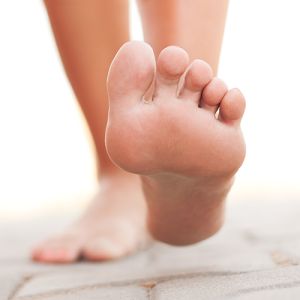
Functional electrical stimulation (FES) leads to the contraction of muscles in the function of a movement sequence by stimulating a muscle or several muscles directly, or indirectly by stimulating motor nerves, e.g. during the “swing phase” when walking. By means of a contact switch under the heel or an acceleration sensor on the knee, the initiation of the forefoot lift is recognized and supported by the triggered electrical stimulation.
A key advantage of functional electrical stimulation is that patients may use it as a self-treatment at home.
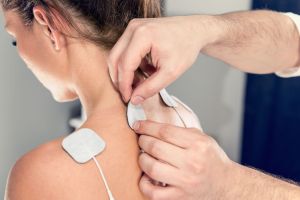
Transcutaneous electrical nerve stimulation (TENS) is a form of electrical stimulation therapy (using surface electrodes) for treating pain caused by a variety of conditions. Patients may use TENS as a self-treatment at home. The aim of this therapy is to reduce or eliminate pain by modulating the pain fibers (afferent nerve pathways). TENS activates the body’s own pain inhibitory mechanisms in the spinal cord and the activation leads to an increased release of endogenous morphine (endorphins).
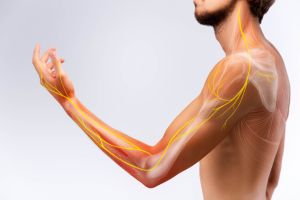
Subcutaneous nerve stimulation (SNS) modifies pain and is an alternative to transcutaneous electrical stimulation – if this is used continuously for several hours a day. A multi-pole electrode is placed in the subcutaneous connective tissue of the skin over the area of pain and, after a test phase, connected to a nerve impulse generator implanted under the skin. The procedure is minimally invasive. The aim of SNS is to reduce or suppress pain by modulating the pain fibers. A hand-held programmer allows the stimulation to be adapted to clinical requirements at any time.
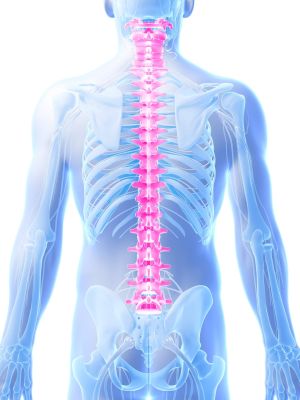
Spinal cord stimulation (SCS) – is a minimally invasive treatment of spasticity (increased muscle tone – in case of stroke, cerebral hemorrhage, multiple sclerosis, spinal cord injury, etc.) and chronic pain (low back pain, polyneuropathic pain, neuralgia, etc.).
The posterior columns of the spinal cord are stimulated via a multi-pole electrode using electrical impulses.
The aim of dorsal column stimulation is to reduce muscle tone (spasticity) as well as pain. The stimulation settings can be changed at any time using a hand-held programmer to optimize the effect of the stimulation.
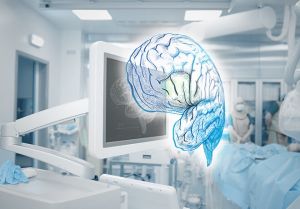
Deep brain stimulation (DBS) is a surgical procedure used to influence movement disorders, such as Parkinson’s disease, dystonias and essential tremor. The indication for deep brain stimulation is determined by the neurologist together with the operating neurosurgeon. If the clinical requirements for the procedure are met, four-pole electrodes placed in the basal ganglia are used to modulate “misdirected signals” via a kind of “brain pacemaker”, and thereby positively modifying or suppressing movement disorder.
The aim of deep brain stimulation is to suppress stiffness, immobility and tremor in Parkinson’s syndrome as well as cramps and involuntary movements in dystonia. The effect of the stimulation can be optimized at any time according to clinical need using a hand-held programmer.